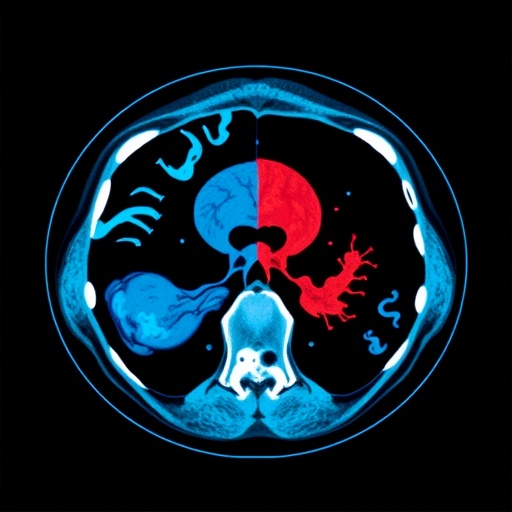In a groundbreaking study published by JAMA Internal Medicine, new projections indicate that computed tomography (CT) scans, a common imaging technique utilized in diagnostic medicine, could lead to a staggering increase in cancer cases in the coming years. The research suggests that under present usage patterns and radiation exposure levels, around 103,000 future cancers will be attributed to CT examinations conducted in 2023 alone. This alarming statistic raises significant concerns about the long-term effects of radiation exposure from medical imaging, especially as CT scans become more widespread in clinical practice.
The study underscores a pivotal point regarding the safety and health implications tied to the diagnostic tools that patients frequently undergo. As a powerful imaging technique, CT scans allow healthcare providers to visualize internal organs and structures, dramatically improving diagnostic accuracy and treatment planning. However, the efficacy of these examinations comes with a crucial caveat: radiation exposure has been linked to an increased risk of developing various forms of cancer. Given that CT scans employ X-rays to create cross-sectional images, the cumulative radiation dose poses serious health risks over time.
Experts involved in the study have articulated that if current practices persist, the proportion of cancer cases attributable to CT examinations could rise to account for approximately 5% of all new cancer diagnoses annually. This alarming forecast shines a harsh light on the importance of reevaluating established imaging protocols. Physicians and radiologists may need to strike a balance between utilizing the benefits of CT imaging and minimizing risks to patients. These findings prompt challenging ethical considerations about how best to utilize diagnostic imaging while safeguarding patient health.
The implications extend beyond the individual patient; they also have profound public health ramifications. As healthcare systems become increasingly reliant on advanced imaging technologies, educators, policymakers, and medical professionals may need to engage in broader dialogues about appropriate imaging practices. This includes revisiting guidelines for when and how to administer CT scans, especially for populations that may be particularly vulnerable to radiation exposure, such as children and pregnant women. Institutions are being urged to foster a culture of safety where the judicious use of CT imaging is prioritized.
This study serves as a timely reminder of an ongoing issue in modern medicine. While the convenience and enhanced diagnostic capabilities of CT scans cannot be overstated, the flip side of this innovation is the hidden risk of increased cancer incidence. Medical practitioners are now called to reassess the indications for imaging and to consider alternative methods that minimize radiation exposure. Clinical decision-making must be evidence-based and reflective of a patient-centered approach, advocating for informed choices regarding diagnostic imaging.
Furthermore, the study emphasizes the need for comprehensive education and awareness among healthcare providers regarding radiation exposure risks. Radiologists and referring physicians should be trained to communicate the potential dangers associated with imaging, allowing patients to make informed decisions regarding their diagnostic options. Enhanced training programs that focus on safety, alternatives to high-radiation imaging, and the significance of radiation dose management are crucial steps in this direction.
Additionally, the research calls attention to the necessity of investing in advancements in imaging technology. Innovations that reduce radiation doses without compromising diagnostic quality can transform the landscape of medical imaging. For instance, new algorithms that enhance image quality while using less radiation and advanced imaging techniques like magnetic resonance imaging (MRI) could serve as feasible alternatives. The future of diagnostics hinges not just on imaging technology but on how these innovations can be marshaled to uphold patient safety.
As the healthcare community grapples with these findings, the impact of structural and systemic changes in medical practice is paramount. Initiatives aimed at standardizing protocols for CT scans, creating databases that track radiation exposure, and employing quality assurance measures can help mitigate associated risks. Policymakers may also explore regulations that govern radiation exposure limits from diagnostic imaging, ensuring the highest standards of patient care are maintained.
Rebecca Smith-Bindman, MD, whose research underscores these findings, advocates for a concerted effort from the medical community to address these pressing concerns. As the corresponding author of the study, Dr. Smith-Bindman underscores the responsibility that clinicians share in determining appropriate imaging strategies. A collective commitment to patient safety, informed consent, and active engagement in dialogues about radiation risks will be necessary to navigate this complex terrain effectively.
Looking ahead, the medical community must prioritize research that furthers our understanding of the implications of diagnostic imaging on long-term health outcomes. Continued studies that evaluate the associations between radiation exposure from CT scans and cancer risk, alongside ongoing efforts to develop safer imaging methods, are vital. This trajectory not only promises to enhance patient safety but also aims to redefine the standards by which diagnostic imaging is conducted in the modern era of medicine.
In conclusion, the revelations from this study are a clarion call to healthcare professionals, institutions, and policymakers alike. The dualities of advanced imaging techniques like CT scans necessitate a nuanced approach that carefully weighs benefits against risks. Fostering an environment where informed decision-making is central to patient care could ultimately pave the way toward improving diagnostic practices, enhancing patient safety, and reducing the burgeoning incidence of radiation-related cancers in the years to come.
Subject of Research: The impact of computed tomography on cancer risk.
Article Title: Projected Cancer Cases Attributable to Computed Tomography Imaging in 2023
News Publication Date: October 2023
Web References: [Link not provided]
References: [Link not provided]
Image Credits: [Link not provided]
Keywords: computed tomography, cancer risk, medical imaging, radiation exposure, patient safety, healthcare systems, diagnostic practices, radiology.




